
保存工具栏停靠 mfc
A popular feature in previous versions of Windows was the ability to dock a toolbar to the side of the desktop. Most people used this for an auto-hiding quick launch or address toolbar, or both.
Windows早期版本中的一个流行功能是能够将工具栏停靠在桌面的一侧。 大多数人将其用于自动隐藏快速启动或地址工具栏,或同时用于这两种工具。
To do this in Windows Vista, you’ll first need to create a folder somewhere like your user directory.
要在Windows Vista中执行此操作,首先需要在用户目录等位置创建一个文件夹。
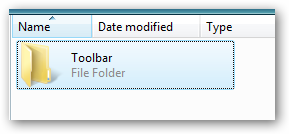
Now drag this folder all the way to either the side or the top of the screen, and it will magically dock to the side. Make sure you drag the mouse as far to the side as you can or else it’ll just move the folder to the desktop.
现在,将此文件夹一直拖动到屏幕的侧面或顶部,它将神奇地停靠在侧面。 确保将鼠标尽可能地拖到侧面,否则只会将文件夹移动到桌面。

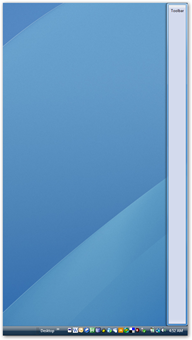
Now right-click on the folder and choose Toolbars, where you can select any toolbar registered with the system. In this example we’ll choose the Quick Launch toolbar.
现在,右键单击该文件夹,然后选择“工具栏”,您可以在其中选择在系统中注册的任何工具栏。 在此示例中,我们将选择“快速启动”工具栏。
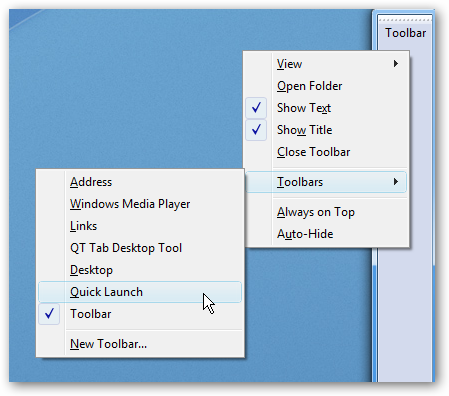
And there we are… the quick launch toolbar is docked to the side, although you will probably want to tweak it.
我们在那里…快速启动工具栏停靠在侧面,尽管您可能想对其进行调整。
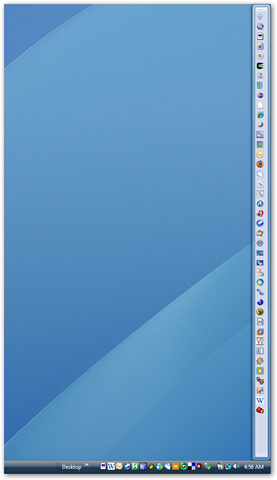
First, you can remove the folder that we created by right-clicking, choosing Toolbars and then removing the selection for the folder name (in this case it was called Toolbar)
首先,您可以通过右键单击并选择“工具栏”来删除我们创建的文件夹,然后删除文件夹名称的选择(在本例中为“工具栏”)
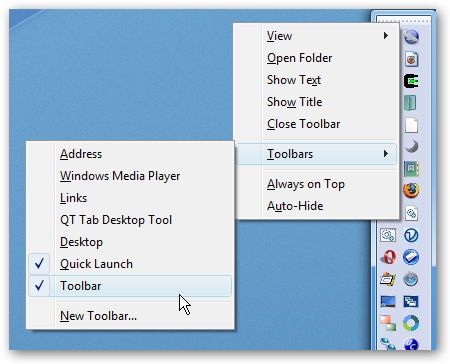
To make the icons smaller, right-click and choose View and then Small Icons. You could also choose to Auto Hide it if you want.
要缩小图标,请右键单击并选择“视图”,然后选择“小图标”。 您也可以根据需要选择“自动隐藏”。
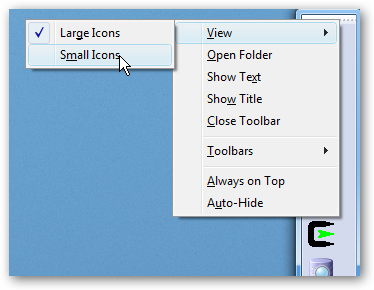
The address toolbar works much better if you dock the toolbar to the top of the screen.
如果将工具栏停靠在屏幕顶部,则地址工具栏的效果会更好。
You can use this for the Google toolbar, iTunes, Windows Media Player, or anything else that has a toolbar.
您可以将其用于Google工具栏,iTunes,Windows Media Player或其他任何具有工具栏的东西。
保存工具栏停靠 mfc























 475
475

 被折叠的 条评论
为什么被折叠?
被折叠的 条评论
为什么被折叠?








